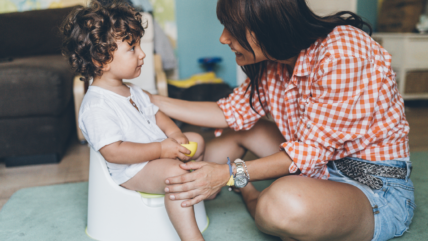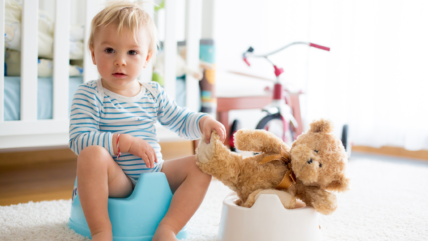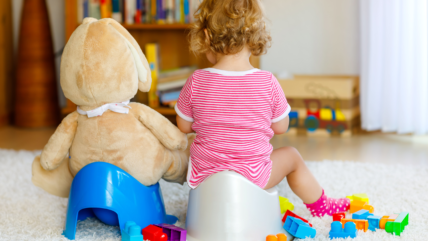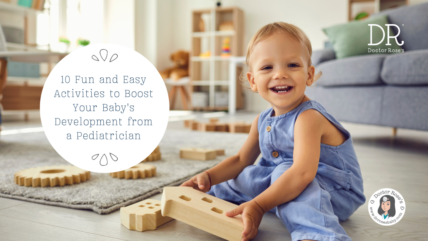Potty training – it’s a milestone that parents eagerly anticipate yet can often feel daunting and overwhelming. As a pediatrician and a mom of five energetic little ones, I’ve had my fair share of experience with this crucial developmental stage. Through the ups and downs, I’ve learned valuable insights and strategies that I’m excited to share with you. In this comprehensive guide, we’ll delve deep into the world of potty training, covering everything from understanding readiness signs to troubleshooting common challenges. So, grab a cup of coffee (or tea!), take a deep breath, and let’s embark on this journey together.
Understanding Readiness Sign

Before diving headfirst into potty training, it’s crucial to assess your child’s readiness. While there’s no one-size-fits-all approach, there are some common signs that indicate your child may be ready to start the potty training journey. Look for signals such as staying dry for longer periods, showing interest in the bathroom, or expressing discomfort with soiled diapers. Most children are ready between 18 months to 3 years, but remember, every child is unique, so it’s essential to be patient and attentive to your child’s cues.
Creating a Potty-Friendly Environment

Once you’ve determined that your child is ready, the next step is to create a potty-friendly environment. Make the bathroom an inviting and accessible space for your little one. Consider investing in a child-sized potty chair or a seat reducer for the regular toilet. Let your child pick out fun underwear and decorate the bathroom with their favorite characters or stickers to make it more appealing. The goal is to make the potty experience as comfortable and enjoyable as possible for your child.
Establishing a Consistent Routine

Consistency is key when it comes to potty training success. Establish a consistent routine and stick to it religiously. Encourage your child to sit on the potty at regular intervals, such as after meals, before bedtime, and upon waking in the morning. Consistency helps reinforce the habit and builds your child’s confidence in using the potty independently. Remember to be patient and understanding, as mastering this new skill takes time and practice.
Using Positive Reinforcement

Potty training can be a challenging journey filled with ups and downs. However, positive reinforcement can make all the difference in your child’s progress. Praise your child for their efforts, even if they don’t succeed every time. Use stickers, small treats, or a special reward chart to celebrate milestones and keep your child motivated. The key is to focus on the positives and encourage your child every step of the way.
Being Patient and Understanding

It’s essential to approach potty training with patience and understanding. Accidents are inevitable during the learning process, so it’s crucial to stay calm and reassure your child that it’s okay. Avoid scolding or shaming, as this can create anxiety and hinder progress. Instead, offer gentle guidance and encouragement, emphasizing that accidents happen and that they’re part of the learning process. Remember, Rome wasn’t built in a day, and neither is potty training mastery.
Leading by Example

Children learn by watching and imitating, so be sure to lead by example. Let your child observe you or older siblings using the toilet, and narrate the process so they understand what’s happening. Make it a fun and interactive experience by singing songs or reading books about potty training together. Seeing others potty successfully can motivate and inspire your child to do the same.
Staying Flexible and Adapting

Every child is unique, and what works for one may not work for another. Be prepared to adjust your approach based on your child’s temperament and progress. If a particular method isn’t yielding results, don’t hesitate to try something new. Remember, there’s no one-size-fits-all approach to potty training, so be open to experimentation and find what works best for your child.
Troubleshooting Common Challenges

Despite our best efforts, potty training doesn’t always go smoothly. It’s not uncommon for children to face challenges along the way, whether it’s resistance, regression, or constipation. As a pediatrician and a mom, I’ve encountered my fair share of potty training hurdles, and I’m here to help you navigate them. Here are some common challenges and strategies for overcoming them:
Resistance: If your child is resistant to potty training, try to understand the underlying cause. It could be fear, anxiety, or simply a lack of readiness. Address any concerns your child may have and reassure them that it’s okay to take things slow. Offer incentives or rewards to encourage participation, and be patient as your child gradually becomes more comfortable with the process.
Regression: Regression is common during the potty training journey, especially during times of stress or change. If your child starts having accidents after making progress, remain calm and supportive. Revisit the basics of potty training, such as consistent routines and positive reinforcement. Offer plenty of praise and encouragement for successful trips to the potty, and reassure your child that setbacks are temporary.
Constipation: Constipation can be a common issue during potty training, as children may withhold bowel movements due to fear or discomfort. Ensure that your child is getting plenty of fiber and fluids in their diet to promote regular bowel movements. Encourage your child to sit on the potty regularly, especially after meals, to help establish a routine. If constipation persists, consult your pediatrician for further evaluation and treatment options.
When a child is really struggling with potty training, it’s essential for parents to approach the situation with empathy and understanding. Every child develops at their own pace, and some may find the transition more challenging than others. It’s important to consider factors such as anxiety, sensory issues, or developmental delays that could be impacting their progress. As a pediatrician and a parent, I’ve encountered situations where children face significant hurdles during potty training, leading to frustration and stress for both child and parent. In such cases, it’s crucial to seek support from healthcare professionals or behavioral specialists who can provide guidance and strategies tailored to the child’s individual needs. Patience, encouragement, and a supportive environment are key to helping a struggling child navigate this milestone with confidence and success.
Potty training is a significant milestone in your child’s development, and while it may have its challenges, it’s also an opportunity for growth and learning. As a pediatrician and a mom of five, I’ve witnessed firsthand the ups and downs of potty training, and I’m here to tell you that you’re not alone. With patience, consistency, and a positive attitude, you and your child can conquer this milestone together. Remember to trust your instincts, celebrate the small victories, and above all, cherish these precious moments with your little one. Happy potty training!
If you have any questions or need help email me at support@drrosesbaby.com and Sign up to my newsletter.
Grab your baby guides here: Free Baby Guides
Recommended blog:
Serenity and Parenthood: Parenting Tips for Better Sleep and Relaxation











Leave a Reply
You must be logged in to post a comment.